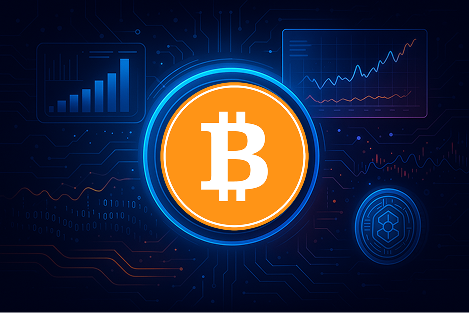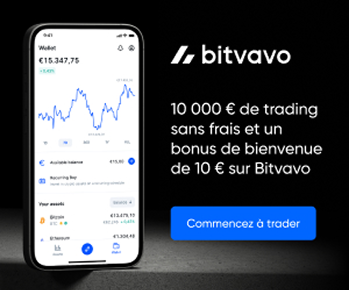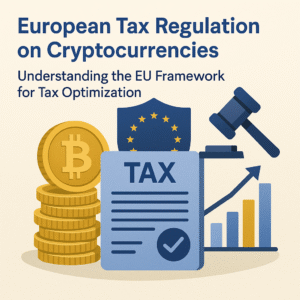Solana: SOL Price, Analysis, How It Works & Investing in the Crypto

Solana (SOL) has emerged as one of the strongest-performing blockchains in the crypto market, offering ultra-fast transactions at minimal cost. Its innovative architecture attracts DeFi developers, NFT creators, gaming studios, and institutional investors. This article provides a comprehensive analysis of Solana: technical workings, use cases, ecosystem landscape, factors affecting its price, and how to buy or invest in SOL.
Key takeaways
- Short-term volatility: sensitive to network bugs, DeFi announcements, and broader market cycles
- Main drivers: DeFi adoption, technical innovations (PoH, ZK), strategic partnerships (Visa, PayPal)
- Long-term growth potential: strong, fueled by scalable infrastructure and a rich ecosystem
- Positioning vs. major cryptos: a high-performance alternative to Ethereum and Layer 2 solutions
Overview of Solana (SOL)
Solana (SOL) is a Layer 1 blockchain launched in 2020, designed for high-speed, low-cost, scalable transactions without sacrificing decentralization. It stands out with its unique consensus mechanism—Proof of History (PoH), combined with Proof of Stake (PoS)—enabling fast and chronological block validation.- Ticker: SOL
- Category: Layer 1 / decentralized infrastructure
- Core function: Execute high‑speed, low‑cost smart contracts
Token utility:
- Pays transaction and execution fees on the network
- Powers staking to secure the network via token delegation
- Accesses services across Solana ecosystem (NFT purchases, yield farming, etc.)
How Solana Works
Solana leverages a unique technical architecture designed for speed and scalability, while drastically reducing transaction costs. Its key innovation—Proof of History (PoH)—timestamps transactions before validation, significantly speeding up block creation.Blockchain and Consensus
Solana employs a dual consensus mechanism:- Proof of History (PoH): a cryptographic clock to timestamp transactions
- Proof of Stake (PoS): validators secure the network by staking SOL
- Solana is not EVM-compatible, unlike Avalanche or Polygon
- Contracts are typically written in Rust, enabling deeper optimizations
- Fees < $0.0025 per transaction, regardless of activity
- Finality in a matter of seconds
- High availability—network stability has notably improved after past outages
- Sealevel: a multi-threaded runtime that allows parallel execution of smart contracts
- Pays network fees
- Used for staking and earning rewards
- Provides access to DeFi, NFT, metaverse, and Web3 applications
History & Origins of Solana
Solana was founded in 2017 by Anatoly Yakovenko, a former Qualcomm engineer, with the goal of creating a blockchain that could rival major tech platforms in speed and cost-efficiency. The whitepaper introduced Proof of History—a cryptographic clock to timestamp transactions for faster validation. Key Dates:- 2018: Solana Labs established in San Francisco
- 2020: Mainnet beta launched, supporting staking and smart contracts
- 2021–2022: DeFi and NFT ecosystem boomed with Serum, Raydium, Magic Eden
- 2022–2023: Major outages followed by targeted network stability improvements
- 2023–2024: Launch of the Solana Saga smartphone, ZK-compression integration, and partnerships with Visa, Shopify, and PayPal
- Solana Labs is based in the U.S., but the network is globally decentralized with validators worldwide
- 2018–2019: Sealevel, Gulf Stream, and PoH development
- 2020: Token sales via SAFT; over $25 million raised
- 2021: Explosive SOL price growth; mainstream adoption in DeFi/NFT sectors
- 2022–2023: High-profile outages leading to targeted fixes
- 2023–2024: Mobile integration, infrastructure enhancements, strategic partnerships
Founders and Team
Founding Team:
- Anatoly Yakovenko – CEO and PoH architect, ex-Qualcomm engineer
- Greg Fitzgerald – CTO and lead developer
- Raj Gokal – COO, product and growth strategist
What Makes [Nom cryptomonnaie] Unique?
Solana’s Uniqueness: Scalability, Ecosystem & Innovation
Solana stands out thanks to its distinctive architecture, expansive ecosystem, and tangible use cases in DeFi, NFTs, gaming, and tokenization.Scalability & Performance
- Proof of History (PoH): internal timestamping enabling 400 ms block times
- Sealevel: parallel smart contract execution
- 65,000+ TPS with average fees < $0.0025 This performance level competes with Web giants in speed and flow.
Diverse Ecosystem
- DeFi: Raydium, Orca, Jupiter, Marinade Finance, Kamino
- NFTs: Magic Eden, Tensor, collections like Mad Lads or SMB
- Gaming: Star Atlas, Aurory, Honeyland
- Memecoins: WIF, BODEN, BONK
- Institutional Partnerships: Visa, Shopify, PayPal (e.g., PYUSD on Solana)
Governance, Staking & Tokenomics
- SOL pays for fees, smart contracts, and staking
- Delegated staking enables users to secure the network via validators
- Partial token burn from fees gradually reduces supply

Comparison to Ethereum & Other Layer 1s
| Criterion | Solana | Ethereum | Polygon / Layer 2 |
| TPS | 65,000+ | ~15 | 2,000–4,000 |
| Average Fees | < $0.0025 | $1–5 | $0.05–0.10 |
| Programming | Rust, C, C++ | Solidity | Solidity (EVM) |
| Decentralization | Medium–High | Very High | Variable |
Innovations to Watch
- ZK Compression: enhances data throughput
- Firedancer: a new Solana client by Jump Crypto to boost network resilience
- Solana Mobile (Saga): a Web3-native smartphone
Conclusion & Future Prospects for Solana
Solana (SOL) stands out in Web3 for its technical excellence, thriving ecosystem, and ongoing innovation. With its unique PoH structure, ultra-low fees, and unmatched throughput, it draws developers, investors, and major brands. Although the network has experienced outages in the past, recent upgrades and the launch of alternative nodes like Firedancer have significantly enhanced its stability. Adoption prospects are strong, fueled by integrations with Visa, PayPal, and Shopify, and booming demand in DeFi and NFTs. Invest in Solana (SOL) today via Binance, Coinbase, or Kraken to back a fast, cost‑effective blockchain built for the future.
FAQ – All About Solana (SOL)
- What is the SOL token used for? SOL covers transaction fees, enables staking, and grants access to DeFi, NFT, and Web3 services within its ecosystem.
- Is SOL a good investment? Yes—thanks to its scalability, rich ecosystem, and strategic partnerships. However, it remains volatile like all crypto assets.
- How does Solana differ from Ethereum? Solana is faster and cheaper but less decentralized. It’s not EVM-compatible and uses different programming languages (Rust vs Solidity).
- Where can I store SOL? SOL is supported by Phantom, Ledger, Trust Wallet, and Solflare—each compatible with Solana dApps and secure storage.
- Is the project secure? Yes. Despite past outages, Solana is constantly improving resilience through an innovative consensus mechanism and a large validator network.
- How do I buy SOL? Purchase SOL on top-tier platforms like Binance, Coinbase, Kraken, or Bitpanda. Use our affiliate links to ensure a secure transaction.
Disclaimer :
Trading is risky and you may lose all or part of your capital. The information provided does not constitute financial advice and/or an investment recommendation
Top-Rated Platforms to Trade Crypto
Explore Our Financial Views on the Market
Crypto News & Insights
Digital Assets Forum 2026 returns to
The Digital Assets Forum (DAF), one of Europe’s most respected...
Blockchain and Cryptocurrency Conference (B2C’ 2025):
The Blockchain and Cryptocurrency Conference (B2C’ 2025) is scheduled for...
European Tax Regulation on Cryptocurrencies: Understanding
The regulation of the cryptocurrencies market in the European Union...













